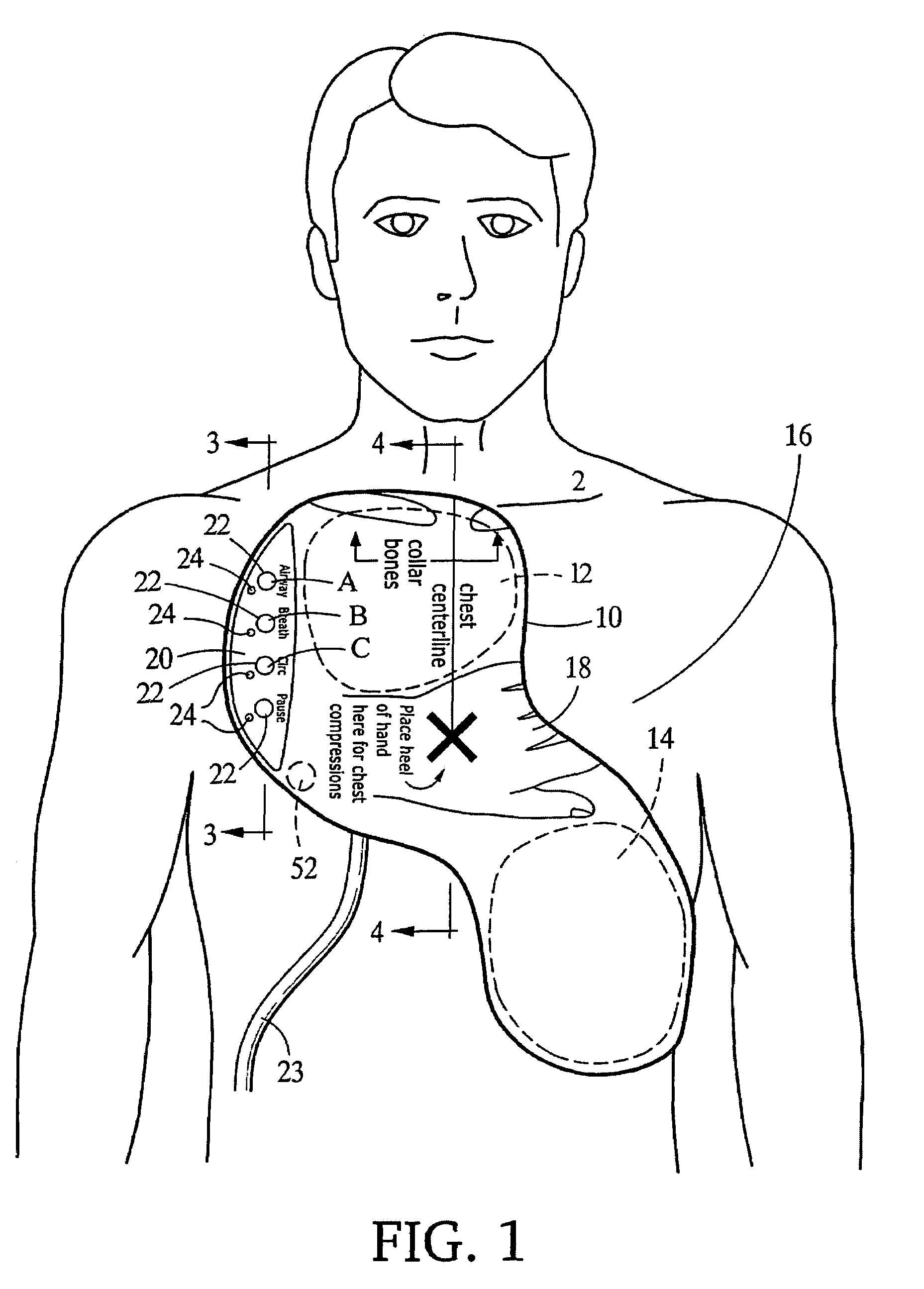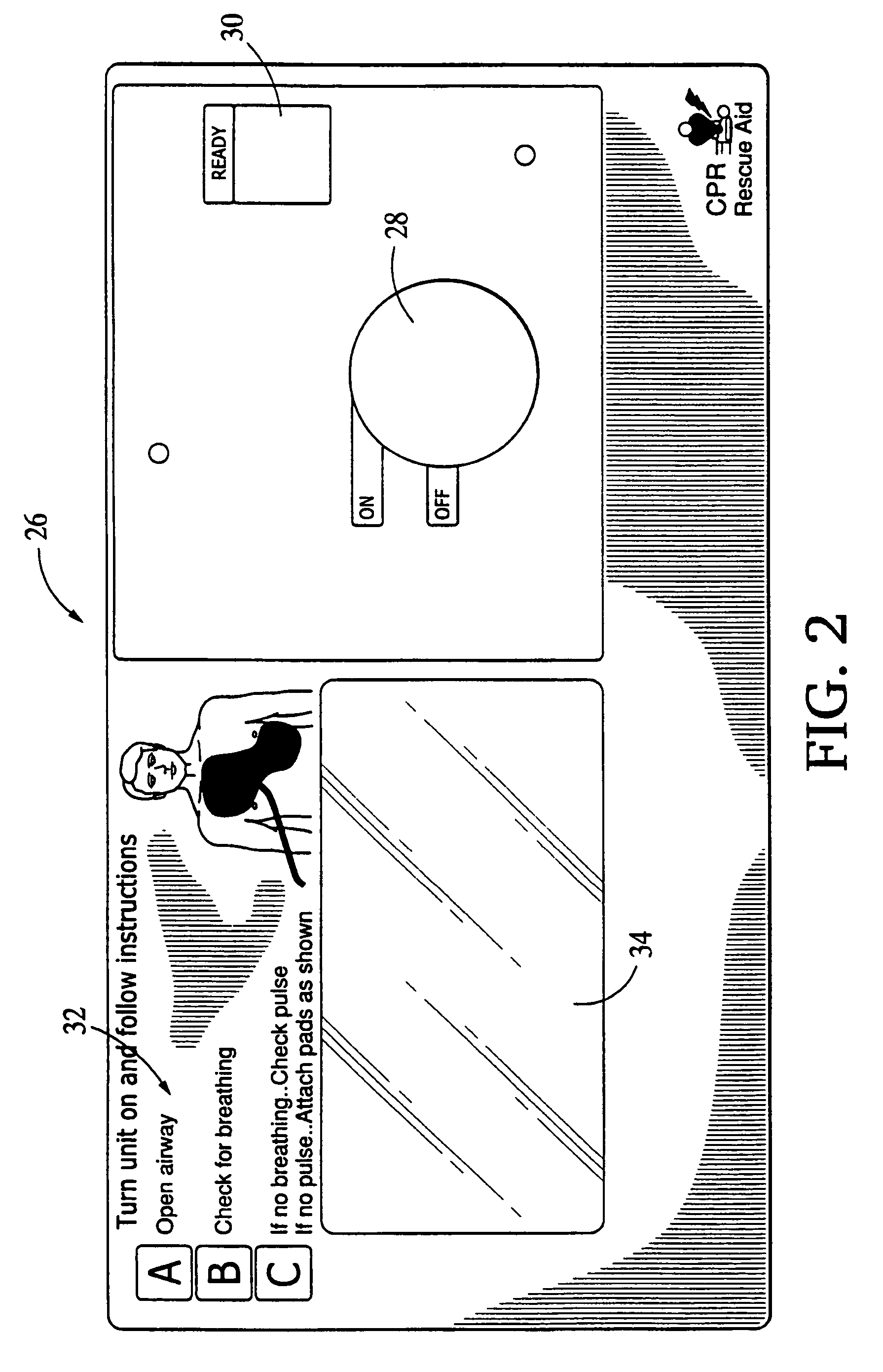Integrated resuscitation
a resuscitation system and integrated technology, applied in the field of integrated resuscitation systems, can solve the problems of low survival rate, patient cannot remain alive with the rhythm, and lay providers can be easily intimidated by an aed
- Summary
- Abstract
- Description
- Claims
- Application Information
AI Technical Summary
Benefits of technology
Problems solved by technology
Method used
Image
Examples
Embodiment Construction
[0030]The defibrillation and CPR assembly according to the invention combines traditional AED (automatic external defibrillation) functions with CPR prompting, and thus transforms a defibrillator into a resuscitation device that combines prompts for clearing a patient's airway, breathing, chest compression, and defibrillation. Thus, the combined defibrillation and CPR assembly combines all of these aspects of resuscitation into a single protocol.
[0031]With reference to FIG. 1, a defibrillation electrode pad 10, which includes high-voltage apex defibrillation electrode 12 and high-voltage sternum defibrillation electrode 14, is placed on the patient's chest 16 and includes a region 18 on which a user may press to perform CPR. Legends on pad 10 indicate proper placement of the pad with respect to the patient's collarbones and the chest centerline and the proper placement of the heel of the rescuer's hand.
[0032]A low-profile button panel 20 is provided on the electrode assembly. Button...
PUM
 Login to View More
Login to View More Abstract
Description
Claims
Application Information
 Login to View More
Login to View More - R&D
- Intellectual Property
- Life Sciences
- Materials
- Tech Scout
- Unparalleled Data Quality
- Higher Quality Content
- 60% Fewer Hallucinations
Browse by: Latest US Patents, China's latest patents, Technical Efficacy Thesaurus, Application Domain, Technology Topic, Popular Technical Reports.
© 2025 PatSnap. All rights reserved.Legal|Privacy policy|Modern Slavery Act Transparency Statement|Sitemap|About US| Contact US: help@patsnap.com



